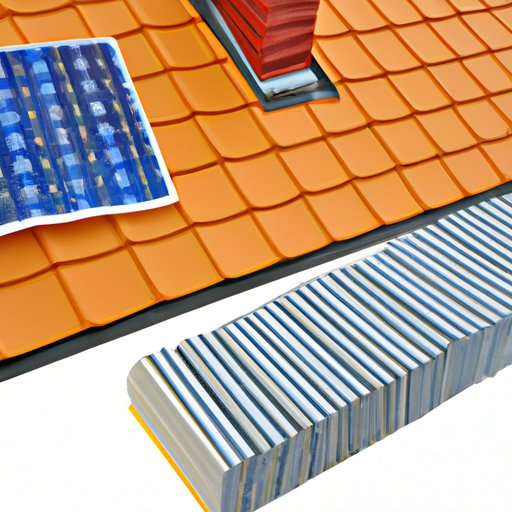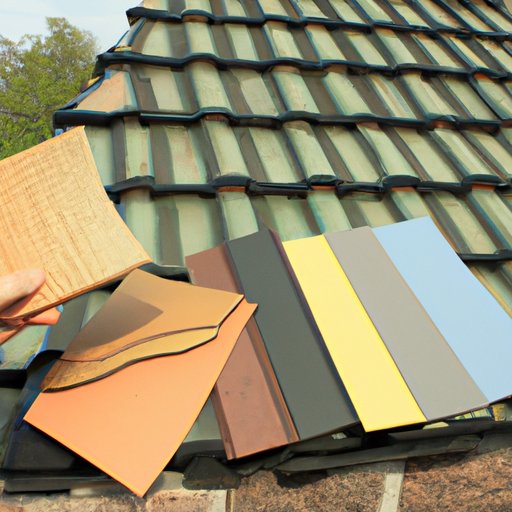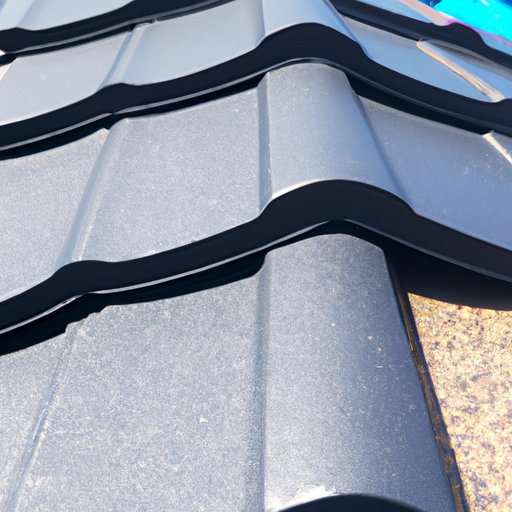Introduction
Architectural shingles are a popular choice for roofing due to their durability, energy efficiency, and aesthetic appeal. But are they worth the extra cost? In this article, we will explore the cost of architectural shingles versus traditional shingles, assess their longevity, discuss the aesthetic advantages, explore the environmental benefits, examine the potential savings on energy costs, analyze their durability in different climates, and highlight the ease of installation.
Definition of Architectural Shingles
Architectural shingles, also known as laminated or dimensional shingles, are composed of two or more layers of asphalt that are bonded together with adhesive material. They are designed to give a three-dimensional look to roofs, which can add visual appeal to any home. They are available in a variety of colors and styles, allowing homeowners to customize the look of their roof.
Overview of Traditional Shingles
Traditional asphalt shingles are single-layered and have a flat appearance. They are made from organic or fiberglass materials, and are typically less expensive than architectural shingles. They are available in a variety of colors and styles, but generally do not offer the same level of customization as architectural shingles.
Compare the Cost of Architectural Shingles to Traditional Shingles
The cost of architectural shingles is typically higher than traditional shingles, however, the difference in cost is dependent on the type of shingle chosen and the size of the roof. Generally, architectural shingles cost between $3.50 and $5.50 per square foot, while traditional shingles cost between $2.00 and $4.00 per square foot.

Discuss the Benefits of Each Type of Shingle
When considering which type of shingle to use, it is important to consider the benefits of each. Traditional shingles are less expensive, easier to install, and require less maintenance. However, architectural shingles are more durable, more aesthetically pleasing, and offer greater energy efficiency.
Assess the Longevity of Architectural Shingles vs. Traditional Shingles
Architectural shingles can last up to 50 years, while traditional shingles typically last 20-30 years. The longevity of shingles depends on a variety of factors such as the quality of the shingles, the climate, and the amount of maintenance performed. According to a study by the National Association of Home Builders, “the average life expectancy of a 30-year architectural shingle roof is nearly twice as long as that of a 3-tab shingle roof.”
Discuss the Aesthetic Advantages of Architectural Shingles
Architectural shingles come in a variety of colors and styles, allowing homeowners to customize the look of their roof. Additionally, the multi-dimensional look of architectural shingles adds visual interest to a home’s exterior, making it stand out from other homes in the neighborhood.

Explore the Environmental Benefits of Using Architectural Shingles
Architectural shingles are energy efficient, meaning they help reduce the amount of energy needed to heat and cool the home. Additionally, many architectural shingles are recyclable, reducing the amount of waste in landfills.

Examine the Potential Savings on Energy Costs with Architectural Shingles
According to the US Department of Energy, using architectural shingles can result in long-term savings on energy costs. The department estimates that over a 10-year period, homeowners can save up to 25% on their energy bills when using architectural shingles.

Analyze the Durability of Architectural Shingles in Different Climates
The durability of architectural shingles varies depending on the climate. In hot climates, the shingles can become brittle and crack, leading to premature failure. In cold climates, snow and ice buildup can cause the shingles to become loose and blow off the roof. It is important to consider the climate when selecting shingles for your roof.
Highlight the Ease of Installation for Architectural Shingles
Architectural shingles can be installed by either a professional contractor or a DIY homeowner. While professional installation is recommended, DIY installation is possible with the right tools and knowledge. Additionally, most manufacturers offer installation guides and tutorials to make the process easier.
Conclusion
In conclusion, architectural shingles offer a number of benefits including increased durability, energy efficiency, and aesthetic appeal. While they may be more expensive than traditional shingles, the long-term savings on energy costs and the potential for increased property value make them worth the extra cost. Furthermore, installation is relatively easy and can be done by either a professional contractor or a DIY homeowner.
(Note: Is this article not meeting your expectations? Do you have knowledge or insights to share? Unlock new opportunities and expand your reach by joining our authors team. Click Registration to join us and share your expertise with our readers.)
